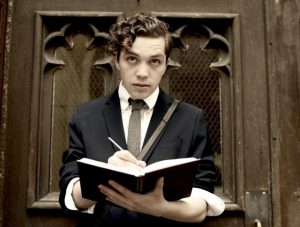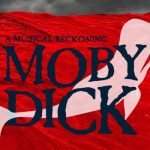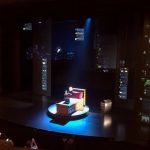During my time here in New York I constantly try to see as much new work as I can. New Musicals, American Premiers or Off-Broadway debuts. It is by sheer coincidence that I stumbled upon this new musical that was written by, as I found out by reading the program, Hofstra University Alumni. But pride for my current university couldn’t put my critical mind at rest. The plot is derived from the book ‘Sodom on the Thames’ by Morris B. Kaplan. Unfamiliar with this book and unknowing that it was based on real people I expected a musical derivative of similar works: Spring Awakening, Bare: a Pop Opera, teens with new ideas on love and life fighting against an oppressive authoritarian (religious) system. Boy was I glad to be proven wrong!

The first act of this musical chronicles the last year of 4 boys at Eton College in England. The story is set in 1872 and the love and passion some of them are expressing for each other is absolutely not accepted. A new Headmaster (Christopher Dippel) has taken reign over Eton and he is cracking down on such behavior even though one of the teachers ‘Tute’ (Joshua William Green), having had similar feelings in his youth, is encouraging said behavior. We see Reginald ‘Regy’ (played by lyricist Jack Saleeby) who is madly in love with Charles ‘Chat’ (Trevor Carr). Regy writes him letters and presents him with gifts but Chat is forced by his uncle to decline them. His uncle pressures him to keep away from such perversity. Two other boys, Elliot (Justin Glass) and Beak (played with excellent comedic timing by Justin Chevalier), form the comedic couple of the play. The musical seems to play out as a very safe and formulaic story, albeit with a gay twist, up until the second act. At the end of the first act the students are found out and the Headmaster as authoritarian force cracks down on their behavior. But then at the beginning of the second act the writers present us with a twist: Instead of seeing the aforementioned crackdown as a reason to ‘fight the system’ – a tale as old as time – they comply with it. The boys go their own, separate, ways.
The writers keep the second act interesting by utilizing what they have set up in the first act to great effect. This refers to props, dialogue but also to song.
I won’t spoil what happens next but I do have to give props to the creators Noah Silva, Jack Saleeby and Peter Charney for keeping the rest of the play dynamic. Complying with an oppressive system is not the inspiring story one expects but it is the truth of this story. The writers keep the second act interesting by utilizing what they have set up in the first act to great effect. This refers to props, dialogue but also to song. The writers have learned from the best how to utilize the ‘reprise’ and they use multiple of them in very clever ways in this show.
Being an off-Broadway musical can mean several things but it often means, especially with regard to shows with short runs, that the production doesn’t have the funds to create a show for a bigger stage or a bigger audience yet. That doesn’t necessarily mean that they don’t utilize whatever they can fund though. Case-and point: the set design for Bright and Brave. Roni Sipp the set designer creates the classrooms of Eton College, the dormitories and a beautiful park by drawing them on 4 separate chalkboards. The chalkboards are on wheels and turn around to reveal the different locations. The physicality of the 4 chalkboards is used to create rooms as well as the images that are on them. The suggestion of room by these images is supported wonderfully by Emilio Maxwell Cerci’s Lighting design.

But as I have said before the real stars of this productions are the writers. During the show it becomes apparent that they have seen a lot of musicals. They know the tricks of the genre and structure their story in a very classic way, however by using a story that doesn’t adhere to clichés and that subverts expectations they keep the formula fresh. They add bold new flavors to the tried and tested recipe and I respect them for that. The music is melodic and sweeping and the score is rife with ballads but given the nature of the characters and the action of the plot it never becomes stale. The orchestrations, done by the band itself, are rich yet minimalistic. The use of the Cello is very effective, but that might just be my personal bias as I love me a good Cello.
All in all I was very, very pleasantly surprised by the quality of this production and I certainly hope to see it grow beyond this point. The story itself is very powerful and the music underscores the themes and the action neatly and perfectly. And even though I have only been at Hofstra for 2 months, even though I have not met these students before, I felt a whole lot of Hofstra Pride. You can still catch this production on the 15th, the 16th, the 22nd and the 23rd of November at Dixon Place in NYC.
Seen on: 11/9/2019, seen at: Dixon Place, NY. DIRECTOR: Peter Charney
MUSIC DIRECTOR: Jason Belanger
CHOREOGRAPHER: Michael Persson
ASSISTANT DIRECTOR/CHOREOGRAPHER: Elisa Galindez
COSTUME DESIGNERS: J Nick Gonzalez, Andrew Walsh
SET DESIGNER: Roni Sipp
LIGHTING DESIGNER: Emilio Maxwell Cerci
COMPANY MANAGER/CREATIVE CONSULTANT: Dabney Rauh
DRAMATURG: Ali Sousa CAST: Trevor Carr, Jack Saleeby, Taylor Rae Almonte, Joshua William Green, Justin Glass, Justin Chevalier, Chris Dippel.


